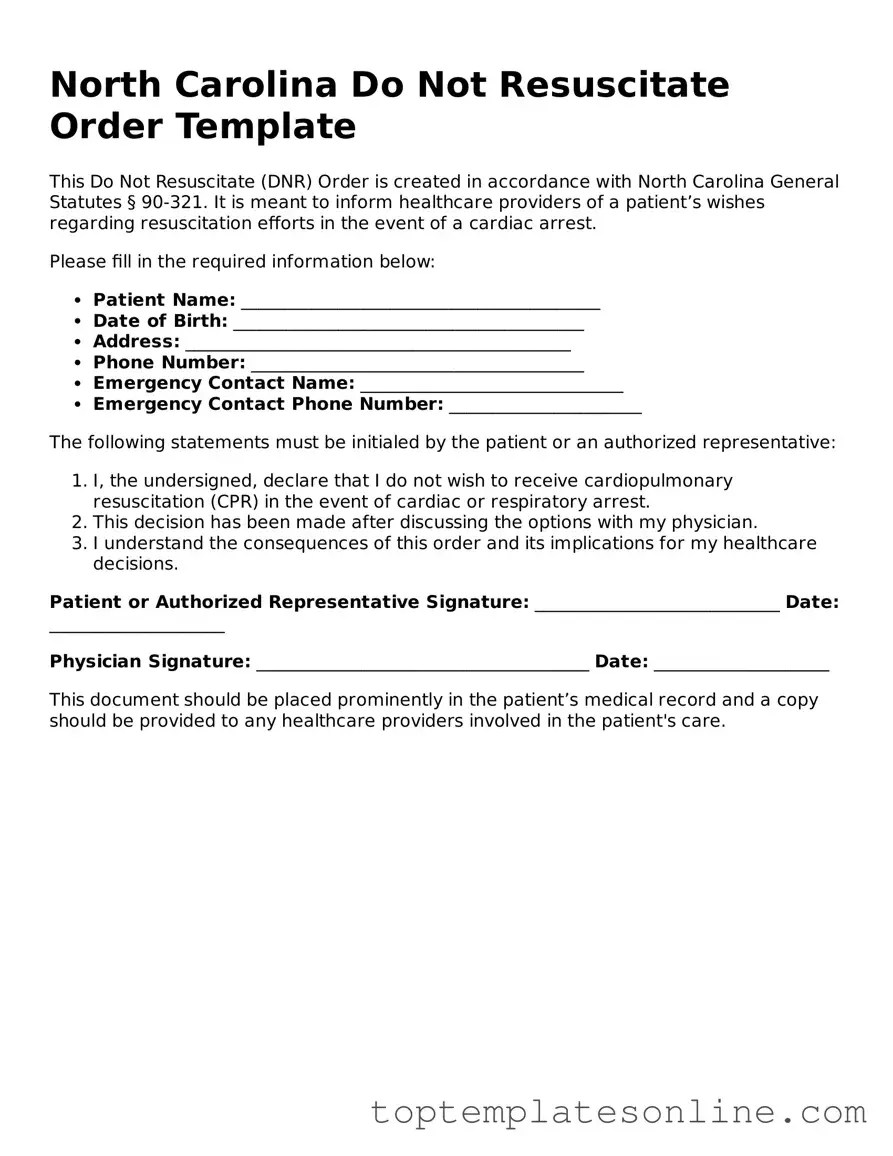Blank Do Not Resuscitate Order Template for North Carolina State
A Do Not Resuscitate (DNR) Order form in North Carolina is a legal document that allows individuals to express their wish not to receive cardiopulmonary resuscitation (CPR) in the event of cardiac or respiratory arrest. This form is designed to ensure that a person's healthcare preferences are respected during critical medical situations. Understanding how to properly complete and implement this form is essential for both patients and healthcare providers.
Customize Do Not Resuscitate Order Here
